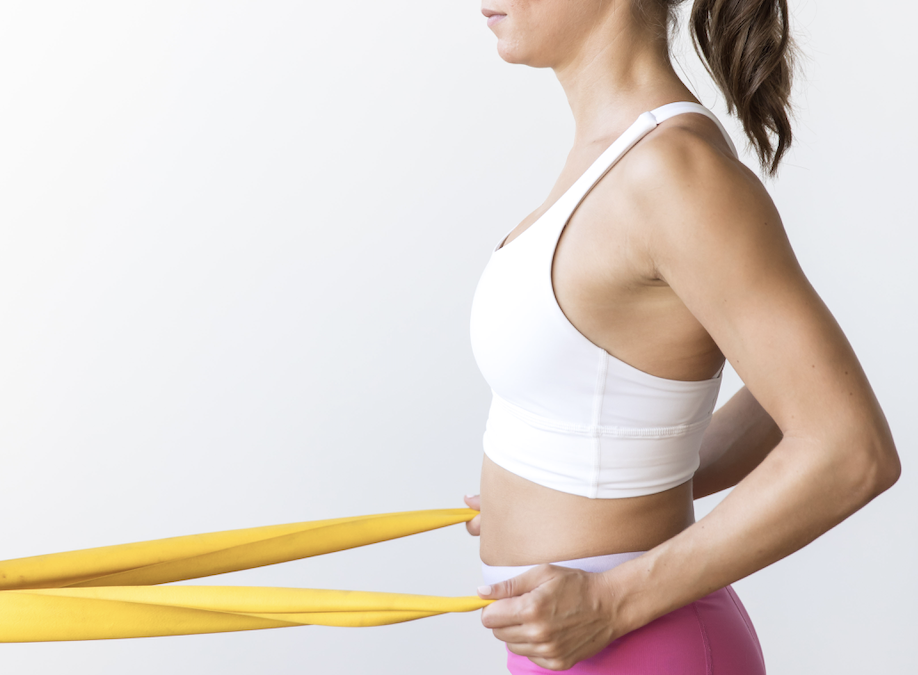Office Worker Injuries
When you hear “workplace injury” one might think of falling down a set of stairs, or burning oneself after spilling a hot cup of coffee. If you actually work in an office, you would know that those are not the true workplace injuries that office workers suffer from. The real injuries of the office workplace stem from prolonged sitting sustained postures at a desk, and repetitive movements such as typing at a computer. Long hours at a desk are inevitable and unavoidable for people working in an office. So, what can you do to prevent things from getting worse or to make your injuries disappear completely?
Here are 3 Exercises for 3 of the Most Common Office-Worker Injuries, that you can do at work!
 Elbow and Forearm Pain (Lateral Epicondylitis)
Elbow and Forearm Pain (Lateral Epicondylitis)
Lateral Epicondylitis: Inflammation of the extensor tendon origin due to repetitive overuse of the extensor tendons
Potential Causes:
• Repetitive fingers/ wrist movements
• Gripping activities
• Typing
• Texting
Exercise: Forearm/ Extensor Muscle Stretch
• Place the back of your hand on a surface such as a chair or desk
• Push the wrist into the surface
• Hold for 30 seconds, repeat 2-5 x/day
 Neck and Shoulder Pain
Neck and Shoulder Pain
Tight Upper Fiber Trap Muscles
Trapezius aka “Traps” is a large muscle located on the back that is compartmentalized into 3 different fibers as they can perform different actions. The Trapezius is divided into Upper, Middle and Lower fibers. The upper fiber traps (UFT) located closest to the neck are often extremely tight in people with desk jobs. UFT tightness can also lead to the development of trigger points in the muscle, which can refer pain to other locations such as the head.
Potential Causes:
• Desk is too high
• Chair is too low
• Forward head posture at a computer
• Stress
• Repetitive overhead activities
Exercise: UFT Stretch
• Anchor the arm of the affected side by grabbing the bottom of your chair
• Pull slightly on the chair with the affected side in order to depress the shoulder
• With the opposite hand, pull your head towards the opposite shoulder in order to side flex the neck
• Hold the stretch for 30 seconds, repeat 2-5 x/day
 Poor Posture
Poor Posture
Weak Shoulder Retractors
Shoulder retractors are muscles that retract or pull the shoulder blades together. When you are told to “sit up straight and bring your shoulders back”, what you are doing is activating you shoulder retractors. The muscles that produce shoulder retraction are the rhomboids and middle fiber traps. Weak shoulder retractors can lead to poor posture, kyphosis, mid/upper back pain, and shoulder mal-alignment.
Potential Causes of Weak Shoulder Retractors:
• Prolonged “computer posture” or slouching forward
• Tight chest muscles
• Prolonged forward head posture
Exercise: Low Rows (with or without band)
• Tie the band to the doorknob, the leg of your desk, or something stable
• Stand or sit tall and pull each end of the band towards you
• Squeeze shoulder blades together, relax the top of your shoulders when doing so
• 12-15 reps, 3 sets / day
By Amanda Benhaim, Physiotherapist and Rocktape Ambassador

 Elbow and Forearm Pain (Lateral Epicondylitis)
Elbow and Forearm Pain (Lateral Epicondylitis) Neck and Shoulder Pain
Neck and Shoulder Pain Poor Posture
Poor Posture